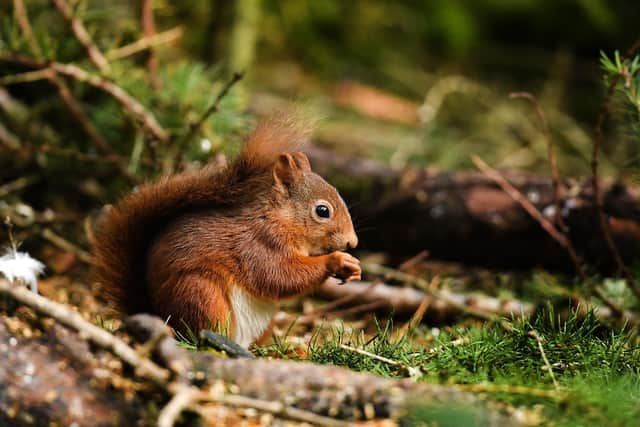Species matter to Scotland’s biodiversity - Paul Walton
This article contains affiliate links. We may earn a small commission on items purchased through this article, but that does not affect our editorial judgement.
The immense variety of the living world is astounding, bewildering – but it is not disordered. Individual animals, plants, fungi, even microbes, occur in inter-breeding groups that we call species. There is genetic diversity within species, and wider ecological diversity too, but species are fundamental units of life. They interact with one another to build ecosystems and together, these comprise biodiversity. Which is in crisis.
Globally, we are losing biodiversity at a rate faster than ever in human history. Scotland is not exempt. Out of 240 territories around the world, Scotland ranks 28th from the bottom in the Biodiversity Intactness Index, an estimate of overall biodiversity condition. The 2019 State of Nature in Scotland Report showed an average loss of 24 per cent in the abundance of well monitored wildlife species since 1994.
Advertisement
Hide AdAdvertisement
Hide AdSpecies-based measures of national biodiversity like this one are not just the territory of wildlife charities and pressure groups. The Scottish Government bases its own National Performance Framework biodiversity indicator on similar, species-based measures.


It is strange, therefore, that in the draft Scottish Biodiversity Strategy to 2045, on which consultation recently ended, species barely featured.
There has been much constructive discussion around that draft, in Parliamentary committees and beyond. Publication of the Strategy, originally due for October, has been postponed pending a new draft in December, with further public consultation in early 2023.
Conservation organisations have been pressing for three changes: The Strategy must include provisions for a Programme of Ecosystem Restoration; a Programme of Species Recovery; and specific Outcomes and Targets against which to measure progress. The Scottish Government are now considering including Ecosystem Restoration and stronger outcomes and targets. But on Species Recovery there is, so far, a frustrating response; “we do ecosystems, we don’t do single species”. There is a simple and seductive logic here: ecosystems comprise lots of species, restore ecosystems and lots of species benefit.
But this vastly oversimplifies the regeneration of the natural environment, overestimates understanding of species interactions and ecosystems, and overlooks our international obligations. Humanity is a long way from full understanding of ecosystem function, the roles played by component species, and how these change through time.
It would be possible to launch much-needed ecosystem restoration programmes for, say, Caledonian pinewoods, yet for these to entirely miss critical actions for species currently struggling in this fragmented habitat – like the twinflower, which needs carefully planned translocation initiatives to help pollinators reach the flowers. We should launch restoration programmes for marine ecosystems – but, alone, these would fail to halt the loss of Scotland’s seabirds, already halved even before the sudden impact of avian influenza. Seabirds have specific needs – like the removal of island invasive predators and in-perpetuity biosecurity, and active measures in fishing fleets to reduce entanglement of birds in long lines and nets. A dedicated programme for every single wild species was never the idea. This is about specific actions, targeted at specific, threatened species.
We need Programmes of both Ecosystem Restoration and Species Recovery. The detail and prioritisations can await future Delivery Plans. But if these are not both explicitly included, in principle, Scotland’s Biodiversity Strategy will not do what it must: regenerate Scotland’s nature, maximise its resilience to intensifying human threats, and fulfil our international responsibilities.
Great skua are one of the worst affected species in the ongoing avian flu outbreak. Scotland holds 60 per cent of the entire world population. Species matter. If we ignore them, we ignore global obligations – and we forget what inspires and sustains our health and culture. A red squirrel, a Scottish primrose and a sea eagle speak more directly, to more people, than any metric or indicator.
Paul Walton, RSPB Scotland’s Head of Habitats and Species Scotland
Comments
Want to join the conversation? Please or to comment on this article.